- Kapustyanka
- Medvedka
- Larva of the bear
- Habitat Bears
The genus of the bear belongs to the order of orthoptera. In the world there are about 100 species of these insects. Grasshoppers, crickets, and locusts are in the same detachment with her. Other names - cabbage, earthen crustacean, spinning top. Their origin is associated with the characteristics of life, behavior, appearance. It has large body sizes, an unusual appearance, feels good in any environment - it is a true masterpiece of evolution.
Appearance
What a bear looks like and its larva can be seen in our article. The unique creature is not like any insect. You can see the photo of the cabbage woman below, get information about who the bear is.
The common bear reaches 7 cm, excluding the mustache and tail. With them, the length of the adult insect is 12 cm. The photo of the garden bear looks intimidating, gives rise to various legends - insect bites, poison is deadly, etc.
Photo and description of the bear:
- Large insects with a cylindrical body shape, folded wings on their backs reach sizes of 12 cm, but the average body length is about 5 cm.
- Small but convex eyes, like cancer, are clearly visible on the head.
- The forelimbs are spade-shaped, equipped with several claws. Strong, massive, designed for digging soil.
- The second pair of limbs is long, thin, mobile. Helps an insect crawl quickly on the surface of the earth.
- The hind limbs are slightly longer than the others, springy. Allow good jumping.
- Abdomen, head protected by a dense shell. The abdominal cavity is 2 times larger than the chest cavity. The photo of the bear demonstrates this well.
- There are long mustaches on the head, a pair of tentacles. The back of the body ends with a long mustache.
- Two pairs of wings are pressed tightly to the back. The first wings are oval, short. The second is long, narrow. Thanks to them, the bug the bear can fly, take off from the ground at 5 m in height. It is possible to describe the process of how a large insect flies in a single word - noisy. Only an adult bear is endowed with such opportunities.
The appearance of a particular species may vary slightly. Due to underdeveloped or missing wings, the insect loses its ability to fly. Below is a bear insect in the photo. Different types of this insect are common around the world. Habitats - fertile soil.
Developmental stages
The insect goes through several stages - the egg, larva, nymph, and imago. The mating season, reproduction begins in May, lasts the entire warm period. How the bear reproduces, it looks beautiful, melodic.
Male has singing abilities and arranges real trills at night with different overflows, chirping. This way attracts the attention of females. Sexually mature females crawl out of the mink, rise in the air, fly towards fate. Able to overcome up to 8 km.
Stages of development of the bear: after fertilization, the female is taken to equip her own housing, nests. The depth of the structure depends on the characteristics of the soil. In chernozem with high humidity, the shelter is located at a depth of 5 cm. In sandy, dry - 15 cm. But it can reach up to 70 cm in depth.
When a bear lays eggs - an ordinary bear lays eggs 2 weeks after fertilization.In one masonry from 25 to 60 pieces. Bear eggs about 1 mm in size. The female provides optimal conditions, takes care of the safe breeding of offspring.
The appearance of the larva
The offspring is shown from the egg after 2 weeks. Larvae of the bear look helplessly - blind, inactive, the color is close to red. The larva of the bear in the photo is located below.
After birth, immediately taken for food. Eat plant foods. A few days later, the earthen bear passes the first molt, turns into a nymph resembling an outwardly adult individual. Transformation into a full-fledged individual is a long, dangerous process. Only strong nymphs can cope with it. The weak risk perishing. Photo and description of the larva below. Before that it looks like a caterpillar, reminds chafer beetle larvabut has some differences.
How long an insect lives - the formation of imago is slow. It takes about 2 years to grow larvae. During this time, the individual passes about 10 molts, at the last stage the genitals are formed.
On a note!
An adult lives about 1.5 years. In artificially created conditions - 3 years. The entire life cycle lasts about 5 years.
Habitat
Where the pest lives, the family hibernates deep in the earth. The nest is built at a distance of 2 m from the surface. It can be arranged under a pile of manure or directly in it. With the onset of heat, when the soil warms up to 12 degrees, it activates its activity. Visible traces in the garden, the results of wrecking. In countries with warm climates active all year round.
Socket Features
Burrows of the bear in the garden - a unique structure with numerous moves, exits. The main part looks like a rectangle. There, the insect rests, hides from enemies, displays offspring. At the exit surface, the entrance looks like a large or small hole. Catch the bear in various ways.
From the nest in different directions go the moves of the bear on the ground. They have a spiral shape, the hole extends to the surface. In this way, the female provides free air circulation, heat intake. So that the terrain is not obscured by plants, the female gnaws the stems, after which the cultures dry up. Egg laying occurs at the time when the beds seedlings are planted, which is why many gardeners have to save her.
On a note!
Numerous labyrinths are located underground at a depth of 5 - 70 cm. It all depends on soil moisture. With a lack of moisture, the larvae either do not hatch or die immediately after birth.
Behavior
Medvedka spends most of her life underground. It digs passages, builds mazes, builds nests. It comes to the surface with the onset of dusk in warm weather. Finds food, or rises into the air to search for the male.
The body structure of the bear allows it to swim on the surface of the water. She calmly overcomes a large puddle, escapes from flooding. But if water falls into the hole, the insect dies.
The thermophilic insect successfully survives winter frosts half the thickness of the soil. With the onset of heat, it gradually rises to the surface. The presence of the pest in the garden plots can be seen in April. Movements form in the earth, traces of legs are visible, plants perish.
On a note!
Medvedka is a shy creature that hides in a mink at the slightest rustle. Catching it yourself is impossible. But if make a trap, you can significantly reduce the number of insects on the site.
Food preferences
What the bear eats is interesting to gardeners, gardeners, lovers of flora and fauna. Bear insect is a predator that prefers plant foods.
Medvedka eats land contents. It feeds on roots, root crops, and the green part of plants that are located directly above the soil. Finds food in the earth - small insects, larvae, earthworms.The delicacy is a chrysalis of other insects, a caterpillar, a butterfly.
Interesting!
Nutritional features make the bear at the same time a useful, harmful creature. In the forest, an insect brings great benefits - it loosens the soil, saturates it with oxygen, and destroys pests. In the garden, in the garden from the bear get rid of all forces. Gnaws green stems on the beds, destroys the root system, gnaws root crops. It does not allow seedlings to take root, germinate seeds.
Natural enemies
It inhabits the bear everywhere, is a food for many animals, is subject to fungal diseases, acts as an intermediate in the reproduction of other insects.
Who eats a bear:
- birds;
- toads;
- lizards;
- moles;
- cats
- any rodent;
- insectivorous mammals;
- spiders.
Fungal diseases can reduce the number of insects. Annoy, exhaust ticks. Wasps use an insect to breed their own offspring - they lay eggs in the body of a bear. Larvae hatch, suck the juices from the victim's body, and lead to its death.
They are grown in a terrarium for the sake of interest or as food for animals, insectivores. In some countries, delicacies are prepared from them, and traditional medicine claims that they help to cope with tuberculosis.
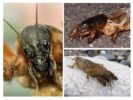
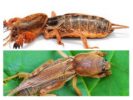
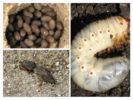
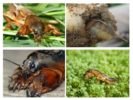
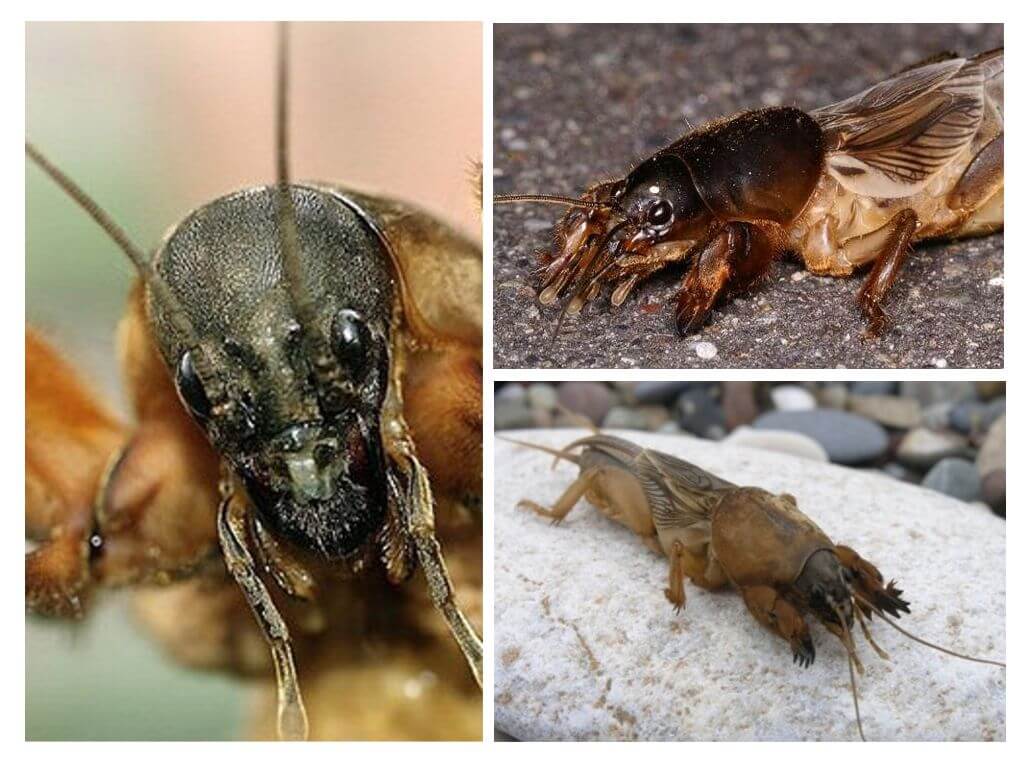
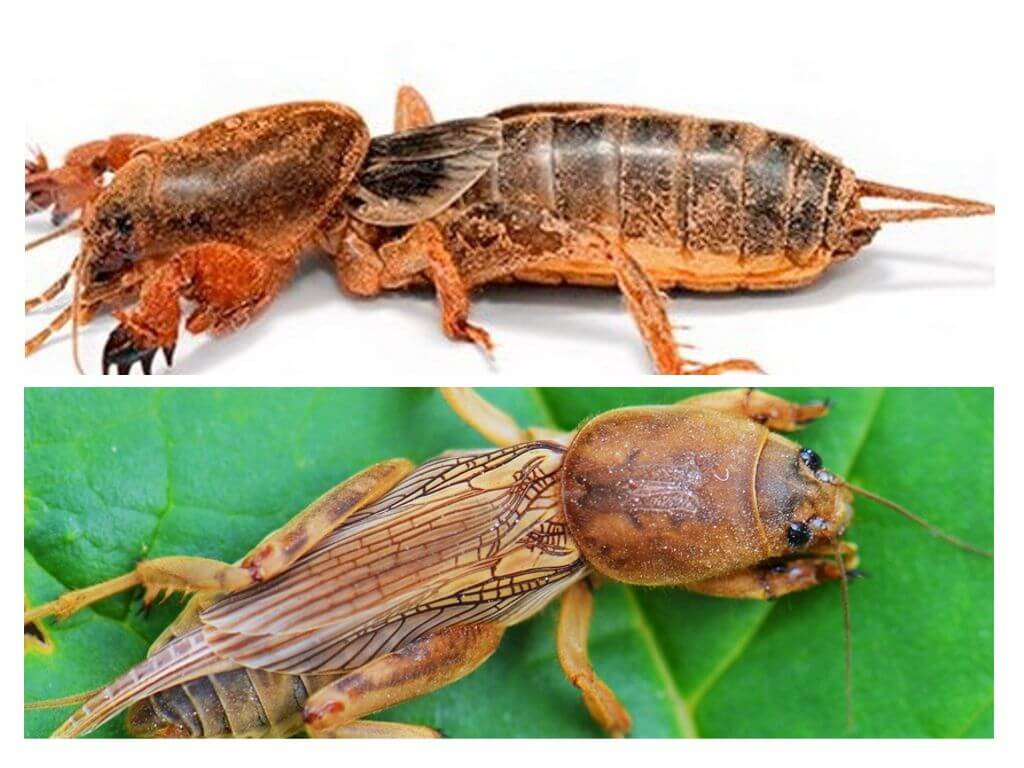
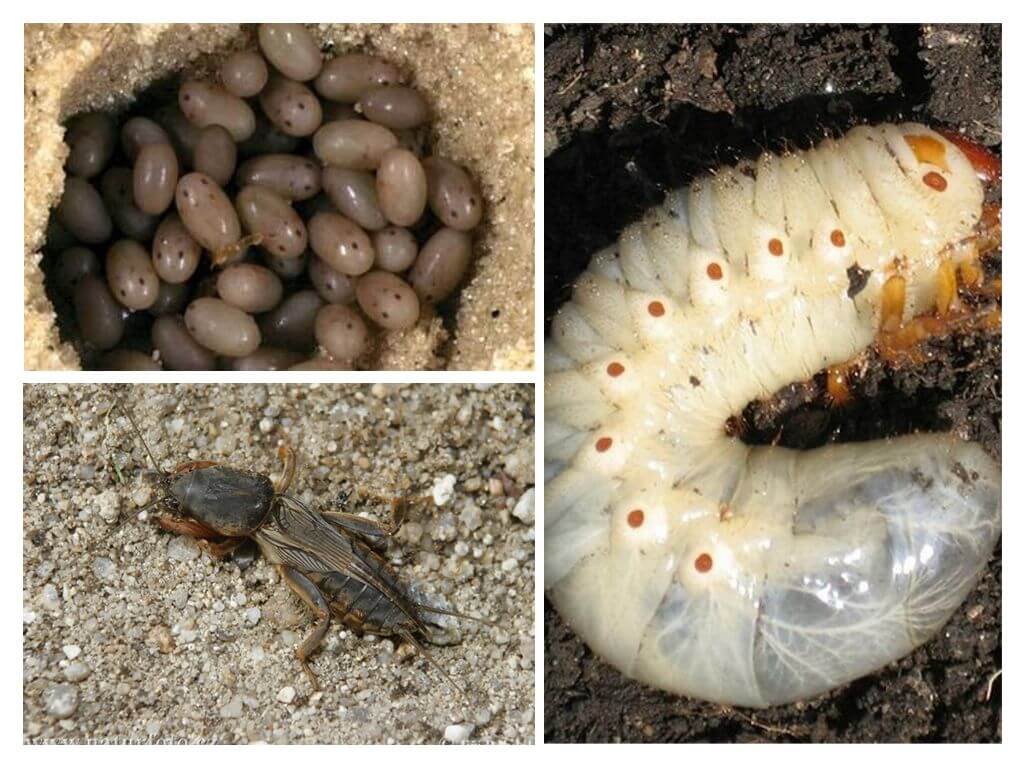
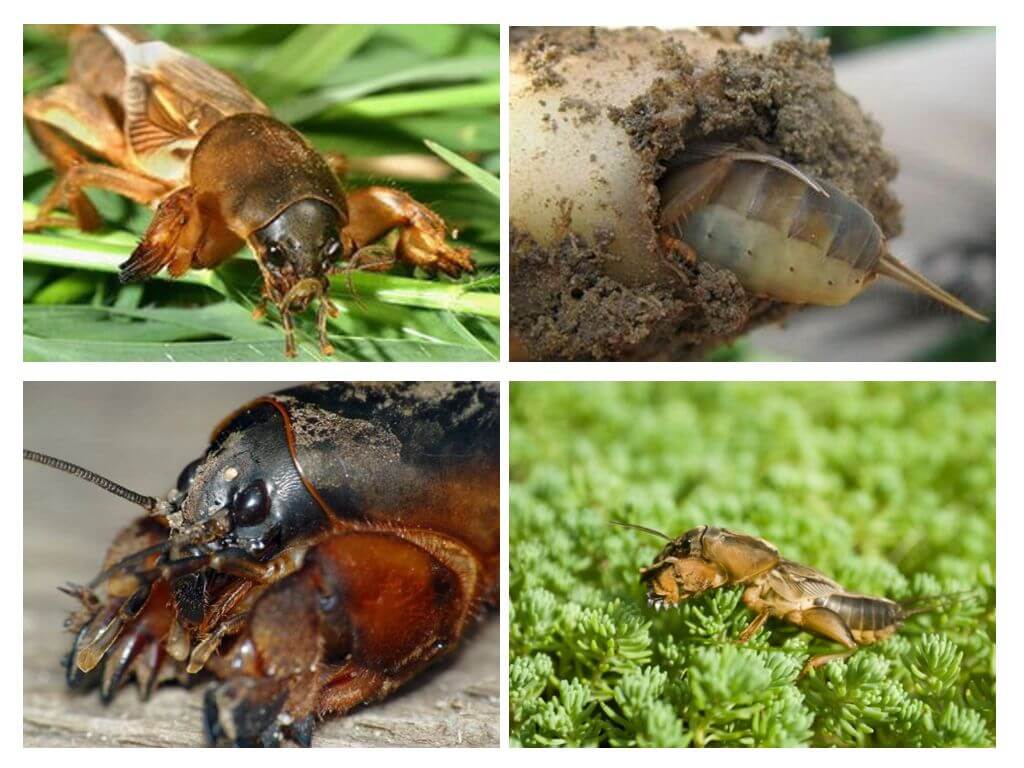
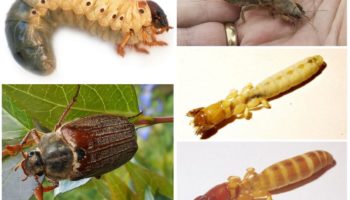
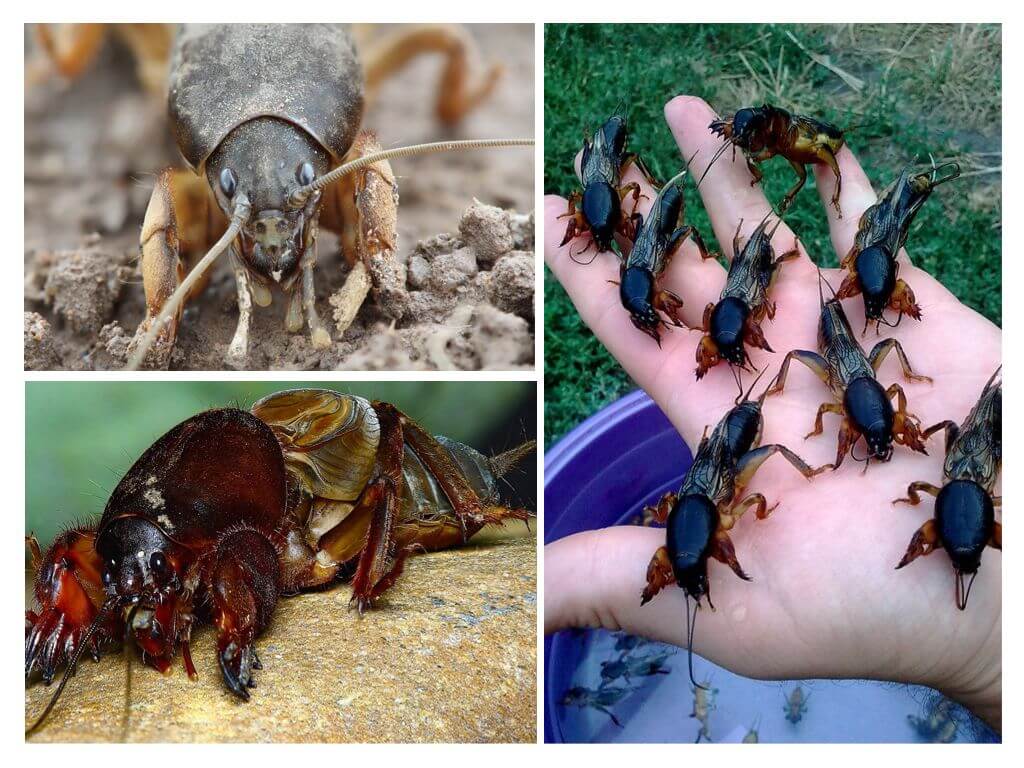
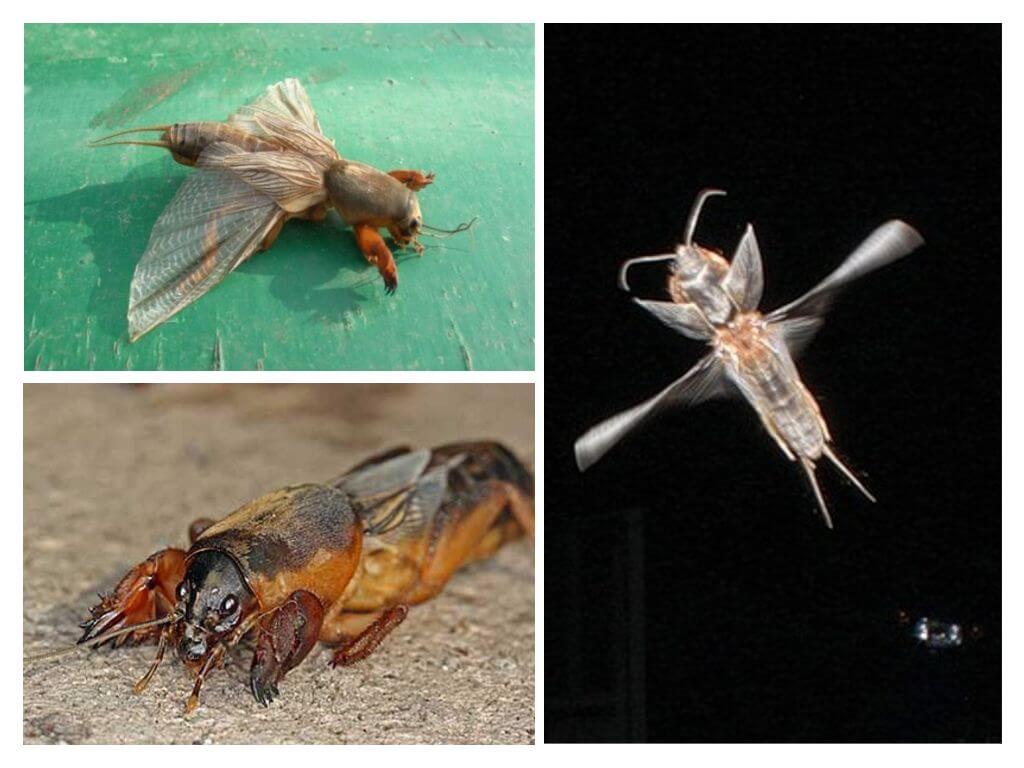
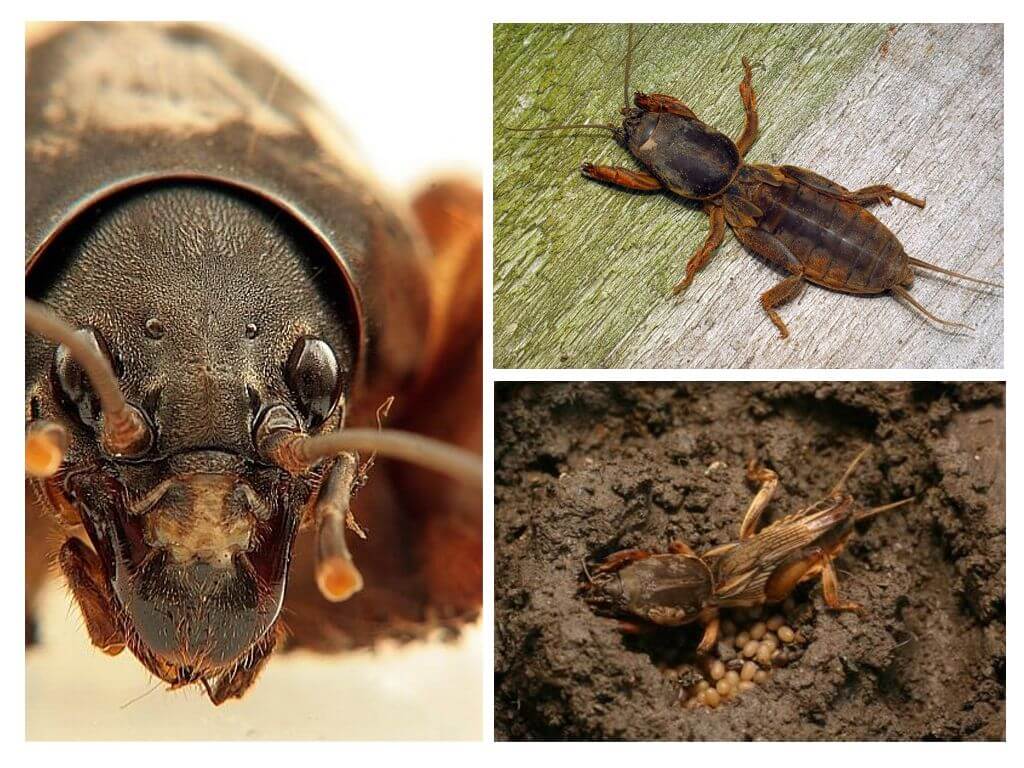
I saw a bear once, I still remember with fear. I certainly wouldn’t take it in my hands.
And I caught them in the garden, planted them in a terrarium, bred them like a pet. It is very interesting to watch them. And the view is scary because of the large size. If you increase the ant, it will also seem like a monster.
Found nests bear at a depth of 50 cm, the soil is loose, sandy. Parents had black soil - it was easier to withdraw. The nests were almost on the surface - 5 cm.
Caught a bear in childhood with a lantern and a bucket of soapy water. Parents benefit, we have fun. Cool creatures. The girls were scared.
Yes, there is something to scare. They remind me of scorpions. It seems that they will sting, then death will overtake. It turns out harmless, do not bite. You won’t think about it.
Destroyed in the garden in various ways. There was no time to look at their beauty. They destroyed the whole seedlings, did not let the beets rise normally.
I learned a lot of interesting things about this creature. In childhood, they were caught, destroyed. Parents said that such creatures are possible. If you understand to the end - you can not. In the forest, they are useful. Loosen the earth like moles.
All creatures on earth are useful, but in moderation. In the garden, they must be fought with all their might. Although, you still can’t get it to the end.
I mixed sand with kerosene, poured into small holes between rows. Bears are afraid of strong odors. One of the best ways.